Exploring Gustavia

Beez Neez now Chy Whella
Big Bear and Pepe Millard
Sat 27 Mar 2010 23:57
|
A Bimble Around
Gustavia
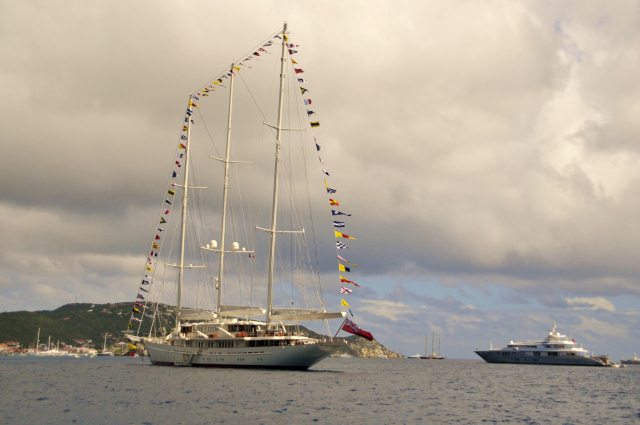 Just near Beez Neez was Artemis, her friend from St Thomas seen in all her glory as
we headed to explore the town
 Off we went with my cool looking co-pilot
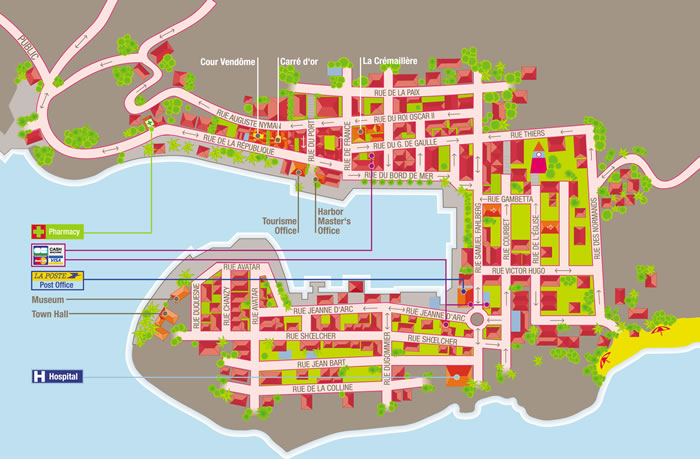 First the Tourism Office to gather
detailed maps, info and amazing booklets on the town
and the island
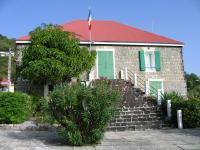 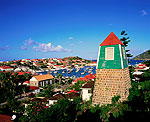  The Sous-Prefecture, The Swedish Bell
Tower and the very Parisian side streets
In the early eighteen hundreds the
Sous-Prefecture was planned as the first school in Gustavia. This solid
stone building was used instead for meetings, parties and galas. In 1819 it
became a prison and during the twentieth century served as a school and
cafeteria for short periods of time. Since 1975 it has been used as the
administrative headquarters for the French Governmental Services in St
Barthelemy.
The Swedish Bell Tower was, like so
many buildings, seriously damaged by the hurricane of the 2nd of August 1837,
but it was quickly restored. The bell served to call the faithful to services, a
signal previously given by drummers in the garrison. Since it was restored again
in 1931, the bell tower has had a large clock on the façade facing the centre of
town.
We could not get over the very
Parisian feel of the whole town, along the harbourside were the sorts of high
end, designer label and exquisitely expensive shops you would
expect in Paris
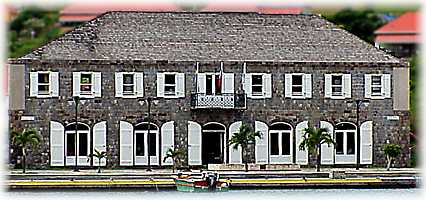 The Wall
House
This stone building sits on Place
Vanadis, one of the largest structures in Gustavia - its history is largely
unknown. Some people think it served as a space for performance and
entertainment, while others think it may have been a hotel, a place for
political meetings or simply a store. No matter what it is the only building of
its type in the town. The name may have come from Job Wall, an American who
called himself the Consul of the US in the late 18th century. Today the ground
floor is a museum, the upper level a library
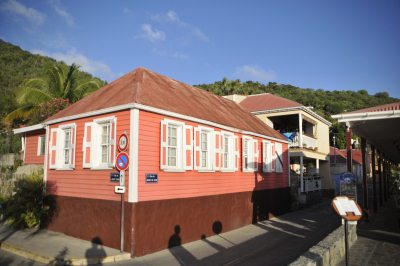 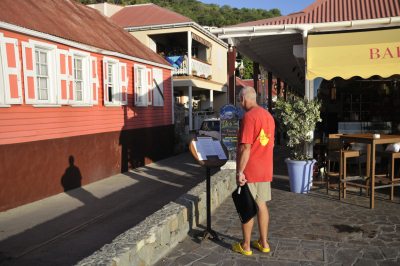 Time for Bear to
choose an eaterie - many wide and varied types of food in all kinds of
buildings (The Vietnamese is in what was the Swedish Vicarage)
 He chose a very
French café by the waters edge so we could watch the big ships come
in
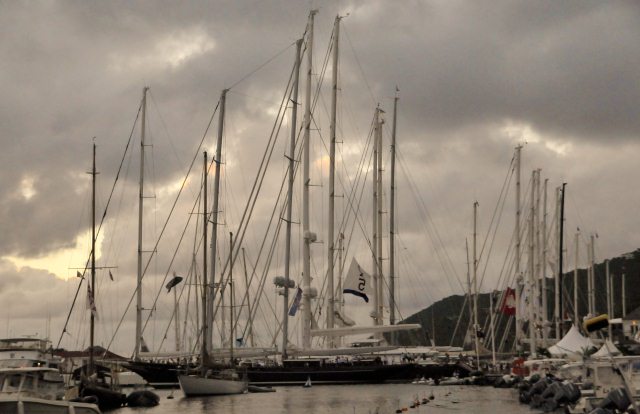 At dusk we watched the big racers come stern to -
 -- stunning as
night fell
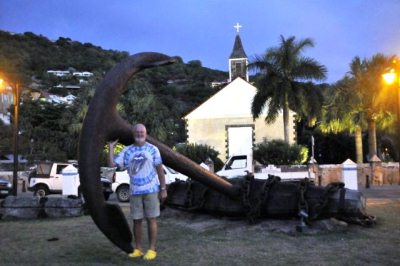  The Anchor outside the
Anglican Church
Just behind the café was this huge
iron anchor weighing ten tons. The words Liverpool....Wood....London engraved on
it. It was discovered in 1981, when it was accidentally picked up by a tugboat -
slowed him down a tad. No one is sure if it was dragged from Charlotte Amalie by
a container ship or as some researchers claim, it came from a ship dating back
to the American Revolution.
The Anglican Church was built over a
period of five years from 1853 to 1855. The walls of this small structure are of
local stone, whilst the façade facing the port, is limestone. The wooden shingle
roof was replaced with corrugated iron. The decorative bell is original wooden
shingles. Time to find Beez in the dark, always fun.
ALL IN ALL A REALLY PRETTY
TOWN
.
|